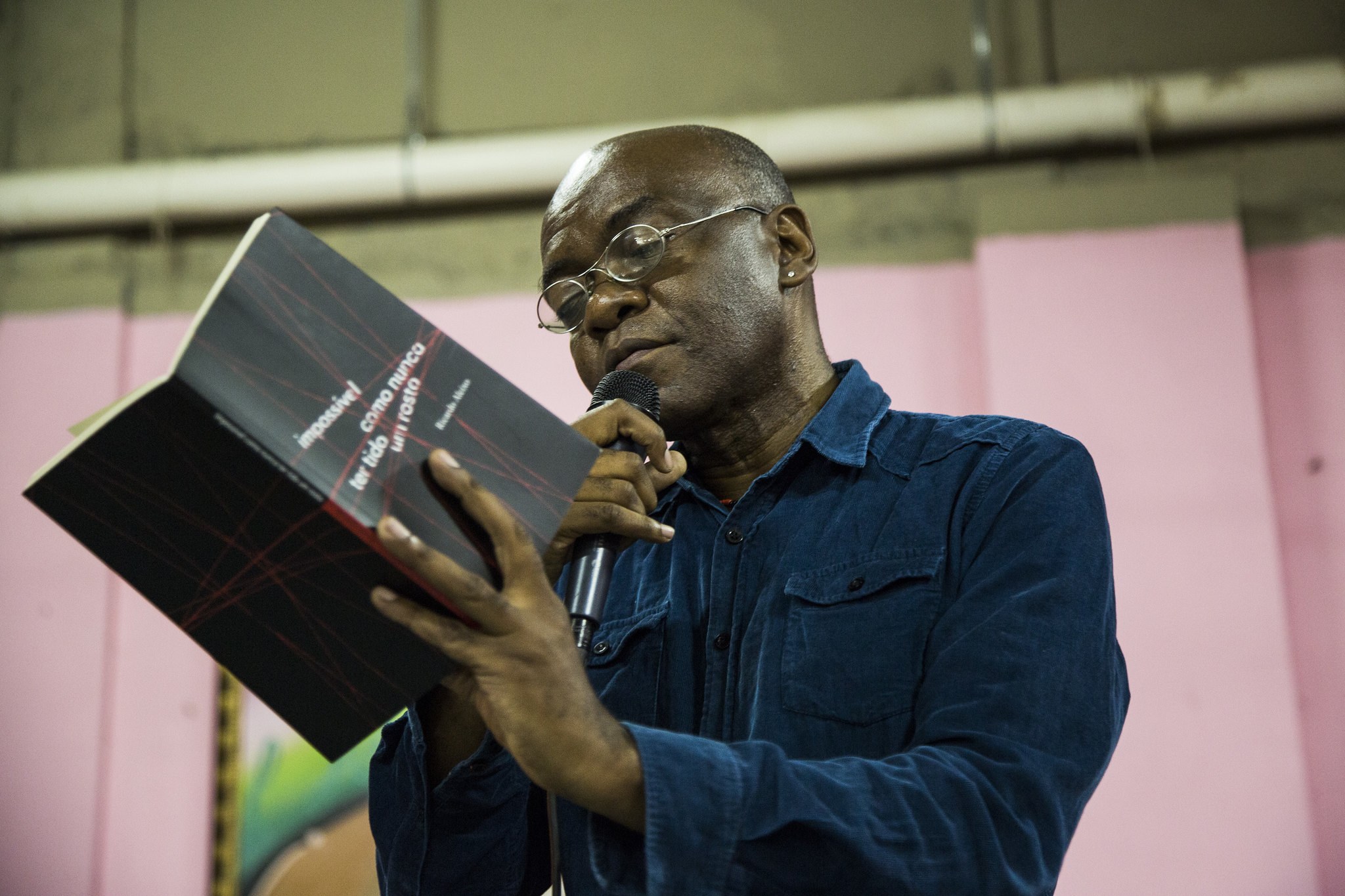"The Blackness That Defines a Black Man in the Eyes of Someone Who is Not Black"
Posted on January 10, 2021

I am whatever you think a black man is. You almost never think about black men.
Performance poet Ricardo Aleixo's "My Man," which first appeared several years ago in an issue of Words Without Borders dedicated to Afro-Brazilian writing, is now being republished as part of this month's focus on "International Black Voices on Race and Racism."
At once confrontational and deeply vulnerable,the poem, for which Aleixo recently made a new video (below), can serve as an excellent starting point for a classroom conversation about race, identity, division, and diversity ahead of MLK Day on Monday the 18th.
The poem's subject is "the blackness that defines a black man in the eyes of someone who is not black": what it feels like to be constantly under the gaze of a race-obsessed society.
I am your black man. I’ll never be only your black man. I am my black man before I am yours. Your black man.
Aleixo's poem seems especially relevant following the January 6th riots in Washington, D.C., during which white supremacists waved Confederate flags in the halls of the Capitol building and many Americans saw a racial double-standard in the police's treatment of the rioters.
The poem's staccato rhythms, its sudden reversals and dislocations, echo the disorientation of double-consciousness. These rhythms are evident both in the original Portuguese, which students can experience in Aleixo's performance video below, and in the English translation from Dan Hanrahan.
(Watch on YouTube.)
Spanish-speaking students may be able to understand some of the original language of the poem, which was published online in Portuguese in the poetry magazine moda de usar & co.
Classroom Activities
- Show students the performance video. Ask them what they think the poem may be about, based on Aleixo's movements, intonations, and any words they recognize.
- Have students read the poem aloud to one another, with expression, in pairs. Have students discuss their initial responses: "What does it feel like to hear the poem? To speak the words of the poem?"
- Then, in small groups, have students discuss these questions:
- Who is the "you" in this poem? What is that person doing and thinking?
- Who is the poem's narrator? What are the narrator's emotions as the poem moves forward? What do you know for sure about the narrator? What are some inferences you could make? How confident are you in those inferences? (The poem plays with readers' perceptions of what a "black man" is.)
Finally, bring the class back together to discuss the poem's ending:
Those times that I am not just black, I am as adrift as the most lost white person. I am not just what you think I am.
Ask students:
- If we look only at a person's race, what are we missing?
- What does the narrator want "you" to understand? Is that kind of understanding possible? Likely? Why or why not?
Contextual Resources
For more on Aleixo, an article in Jacket 2 discusses the performative elements of Aleixo's poetry---his experiments with visuals, sound and video in performance, including the black cloth that appears in the video above, as well DJ-ing, guitarplaying, and animation.
Related reading on Afro-Brazilian identity includes "The Women of Black Lives Matter in Brazil," published in Afropunk; and a truthout.org article about police violence against Afro-Brazilians, the subject of a different Aleixo poem, "Night of Calunga in the Bairro Cabula," which appears beneath "My Man" in WWB.
Students may also be interested in this New York Times op-ed, which provides context on Brazil’s violent drug raids and their disproportionate impact on Black neighborhoods and communities.
Pairs Well with…
Like many works about culture, race, and stereotypes, "My Man" is at once specific and universal. In their introduction to the December 2019 issue of WWB, Eric Becker and John Keene draw a parallel between Aleixo and James Baldwin. Another WWB author, a recent immigrant to the United States from Peru (and recent visitor to this week's #LunchGlobally live stream), also drew a connection to Baldwin in his essay "I am not your Cholo." Other WWB literature on similar themes includes:
- The Mexican poem Marías Mazahuas ("Why are the women called 'Marías'?" you might ask students) and short story The Gringo Champion (includes some four-letter words)
- The Russian stories The Stone Guest and A Dream in Polar Fog
- The Egyptian comic The Pharaohs of Egypt (includes an anatomical reference)
The Japanese story The Trapped Boy, from the point of a view of a bullied teenager, is another work of literature that places readers inside a fragmented perspective, intentionally creating a sense of disorientation.
Potential Assignments
- Write a poem addressed to someone who sees you in a certain way – perhaps an authority figure, a family member, or a peer. The "you" of the poem can be an individual person, or a member of group. What does the person get wrong about you? What do you want the person to know? The poem can be in prose form, like this one.
- (Optional/ Challenge) Prepare to perform your poem in class or record it as a video. Make thoughtful choices around expression, movement, and visual elements, and explain those choices in a short paper.



